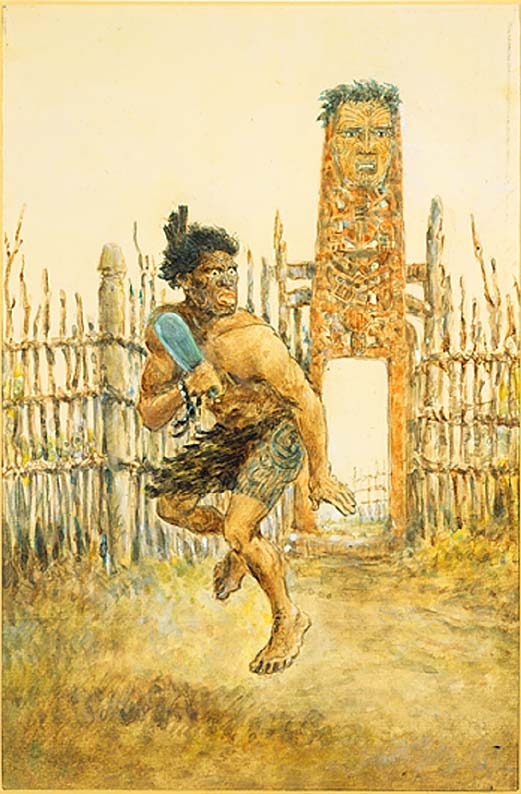 Arawa soldier, 1865
Arawa soldier, 1865
TLF ID R2468
This is a watercolour painting created by British soldier Horatio Gordon Robley (1840-1930) in 1865. He called it 'Arawa soldier warning off'. It shows a Mäori warrior with a moko (skin marking) on his face and a moko puhoro (marking on leg or thigh) on his left thigh. He wears a form of traditional clothing made of either harekeke ('Phormium tenax', New Zealand flax) or bird feathers, and is performing a type of haka (ceremonial dance or challenge). He holds a mere (short, flat club) in his right hand. He is grimacing with his tongue extended, making himself appear more fierce (called whatero), a sign that this haka involves a challenge. Behind him are the palisade of Maketu Pa (near Rotorua in the Bay of Plenty area of New Zealand's North Island) and a gateway made from a canoe. The carved canoe stands vertically and has a large, painted head showing the moko of the tribe. The matt size (that is, the size of the mount) of the painting is 55.8 cm x 45.7 cm.
